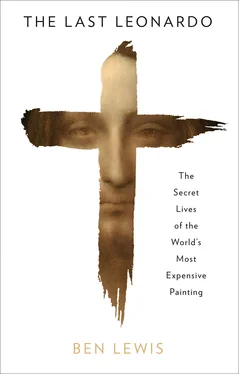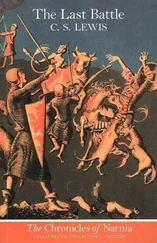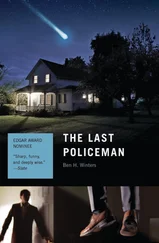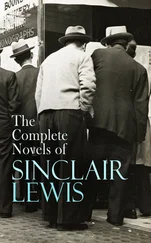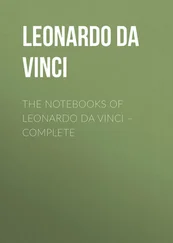Simon climbed the ladder of the art business slowly. He was a research fellow at the Metropolitan Museum in New York. He taught briefly. He tried, but never succeeded, to enter the academic side of the art world. ‘The basic truth is I could not find an academic position in a place I liked,’ he says.
He contributed reviews and articles to the Burlington Magazine , wrote catalogue essays about Italian Renaissance artists for Sotheby’s and minor museum exhibitions from Kansas to Milan. In the 1990s he also wrote catalogues for selling exhibitions at New York’s Berry-Hill Galleries, which collapsed under multiple lawsuits in the mid-2000s.
Simon found employment as an appraiser, one of the more discreet jobs in the Old Masters art market. The appraiser is invited by a collector to assess the quality and value of a work of art, usually with an eye to a sale or purchase, also for divorce settlements and for gifting or loaning to museums, for which there are lucrative tax breaks which American collectors wisely take advantage of. Just as often, the appraiser answers a call from a family that has inherited artworks. ‘Often one is called in to value the estate of someone who has recently passed away, so it’s not exactly a pleasant situation. Maybe two months after a person’s died, you’re in an apartment and the place has not been touched and there are paintings still on the wall, often things that have been there for years and haven’t been cleaned. You’re looking at these paintings in poor light and poor conditions, and there’s a certain treasure-hunting feel to it, but it’s also compromised by the situation.’ Years of experience had taught Simon to peer through the gloom of dark rooms, and the dirt of unrestored and unloved paintings, to perceive a glimmer of quality and art history.
Appraising is a job that embodies one of the great conundrums of the art world – the source of much suspicion and conspiracy theory – which is the interwovenness of scholarship and the market. As Simon says of his work as an appraiser, ‘It’s usually about the financial component, but often enough one has to do a fair amount of research to figure out what it is exactly that one is dealing with before one gets to the value stage.’ The appraiser needs to be as familiar with the development of an artist’s style as he or she is with archives of auctions and inventories, through which a painting’s history may be traced. And the appraiser needs to understand the parabolas of the rise or fall of an artist’s prices, as collated in subscription-only databases. This work, and indeed every kind of dealing in Old Masters, requires a capacious visual and factual memory. You need to be able to recall thousands of works of art, often in their smallest details.
Robert Simon began working as a dealer in 1986, and set up his own gallery in the house he bought in Tuxedo Park, New York state, in the early 1990s. He specialised in European Renaissance and Baroque art, and also took an interest in colonial Latin American art. He followed up his discovery of the Bronzino portrait with a handful of other Renaissance finds: a Parmigianino here, a Pinturicchio there. Over the years he has sold a handful of paintings and sculptures to American museums in Los Angeles, Washington, Detroit, Yale and so on. Curators appeared to respond favourably to his low-key, insistently academic manner. But whatever his past successes, he is the first to admit that he had never sold a work of art as exceptional, or as expensive, as the one he had walked on board this aircraft with, carrying it in a custom-made aluminium and leather case supported by a long strap over his shoulder.
Inside the elegant case was a painting depicting Salvator Mundi, Christ as Saviour of the World, which Simon now believed to be by Leonardo da Vinci. He had only heard informally who would be looking at his picture in London. A few months earlier in New York he had shown it to the director of Britain’s National Gallery, Nicholas Penny. Penny was impressed, thought it could be a Leonardo, and had sent one of his curators, Luke Syson, across the Atlantic to examine it. Syson had begun work on an ambitious Leonardo exhibition that would open several years later, and he saw potential in the painting too. Simon’s trip to London was Penny and Syson’s idea. It would be highly irregular, if not unprecedented, to include a recently discovered but unconfirmed work by such a famous artist, and one which was also currently on the market, in an exhibition at a museum of the international standing of London’s National Gallery. Syson and Penny decided to discreetly convene a panel of the greatest Leonardo scholars in the world to judge the painting behind closed doors, before taking a decision on whether to include it in their exhibition.
Simon knew the odds would be stacked against him and his painting. There was a small army of Leonardists, as they were known, traversing the world, each with a long-lost and newly discovered Leonardo under their arm, trying to build an array of opinions favourable to their cause from museums and universities. Different art historians were allied to different paintings, and, such is the nature of academia today, all were competing with each other. There was the so-called Isleworth Mona Lisa , originally from a collection in a British country house but now owned by a consortium of investors who had set up a front organisation called the Mona Lisa Foundation. Western museums never showed it, but the Isleworth Mona Lisa had been exhibited in a luxury shopping centre in Shanghai. There was a Leonardo self-portrait, known as the Lucan Panel , discovered in southern Italy by an art historian who was also a member of a society linked to the Order of the Knights Templar, founded in the twelfth century, to which, legend has it, Leonardo himself had once belonged. That painting had been on show at a Czech castle, but was turned down by the University of Malta. The Victoria and Albert Museum in London had the Virgin with the Laughing Child , a small terracotta which it had long attributed to the Renaissance artist Rossellino, but which this or that art historian periodically tried to reclassify as Leonardo’s only known surviving sculpture. There was even another Salvator Mundi supposedly by Leonardo, known as the Ganay , named after its last known owner, the French resistance hero Jean Louis, Marquis de Ganay. The last time a painting’s reattribution to Leonardo had been widely accepted was ninety-nine years ago: the Benois Madonna , which today hangs in St Petersburg’s Hermitage Museum.
When Old Master dealers are not selling established masterpieces on behalf of an important client – the easy side of the business – they spend their time finding lost, overlooked or simply underrated works of art, dusting them off, identifying their author and then attempting to sell them as something bigger and better than what they had originally bought them as. The game is to exercise ‘connoisseurship’, using the eye , as it is known, to spot undervalued works. ‘I liken this ability to recognise an artist from what he paints to knowing your best friend’s voice when he calls on the phone,’ Simon told me. ‘He doesn’t need to be identified, you just know , from a combination of the intonation of the voice, the timbre of it, the pattern of speech, the language that he or she might use. There are these elements that when put together amount to fairly distinctive patterns that you, as someone who knows this person, would recognise. That’s really the essence of connoisseurship. There are many in the art community and the art historical community who dismiss it as some sort of voodoo process, but it’s both very rational and at the same time is based on a subjective understanding of things certain people have a knack for, or have studied …’ It is not easy to find the right words to define this elusive process. No wonder Simon was nervous.
Читать дальше
